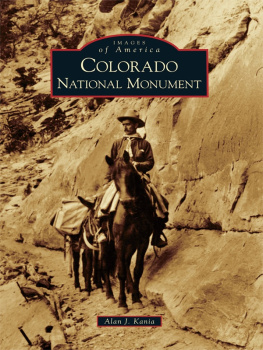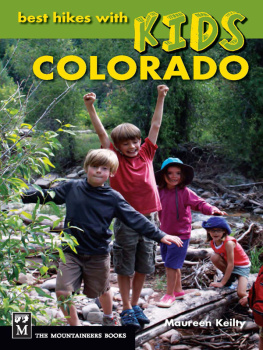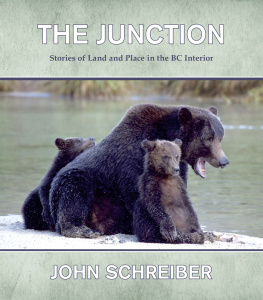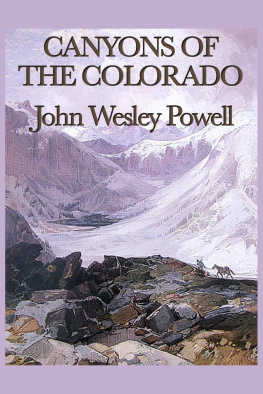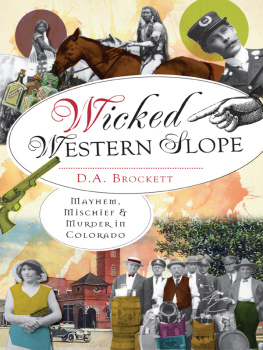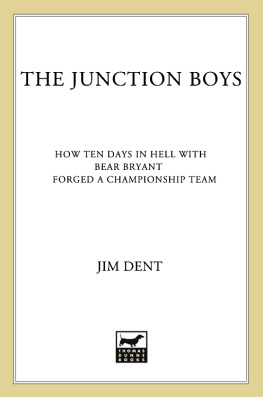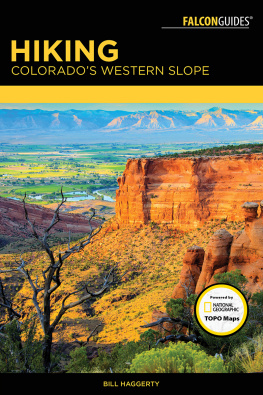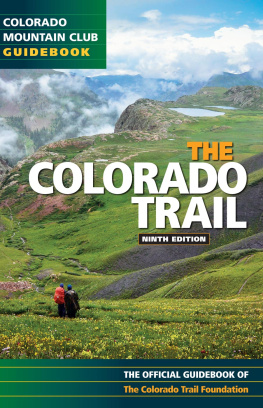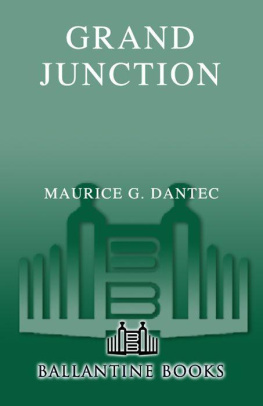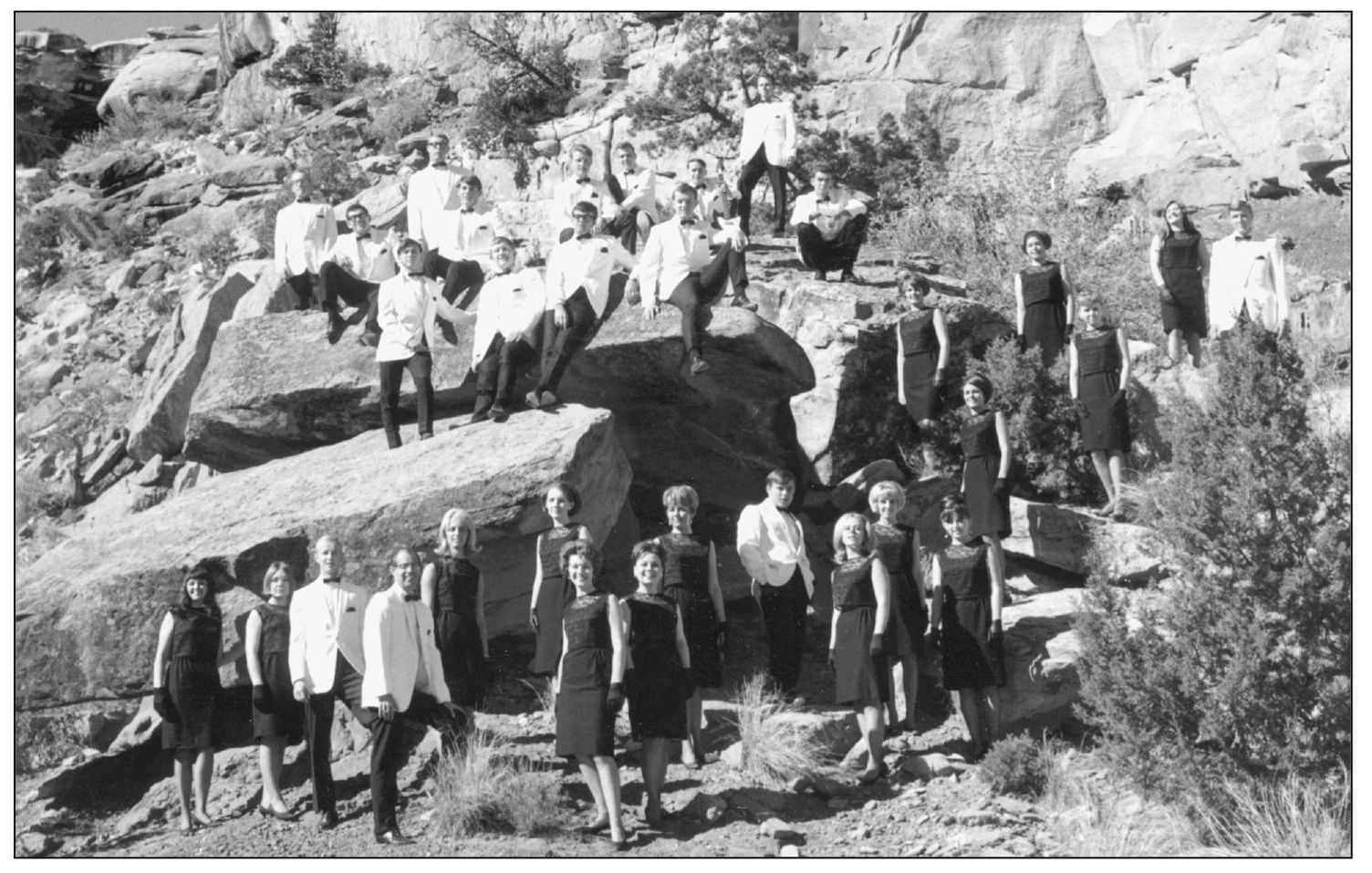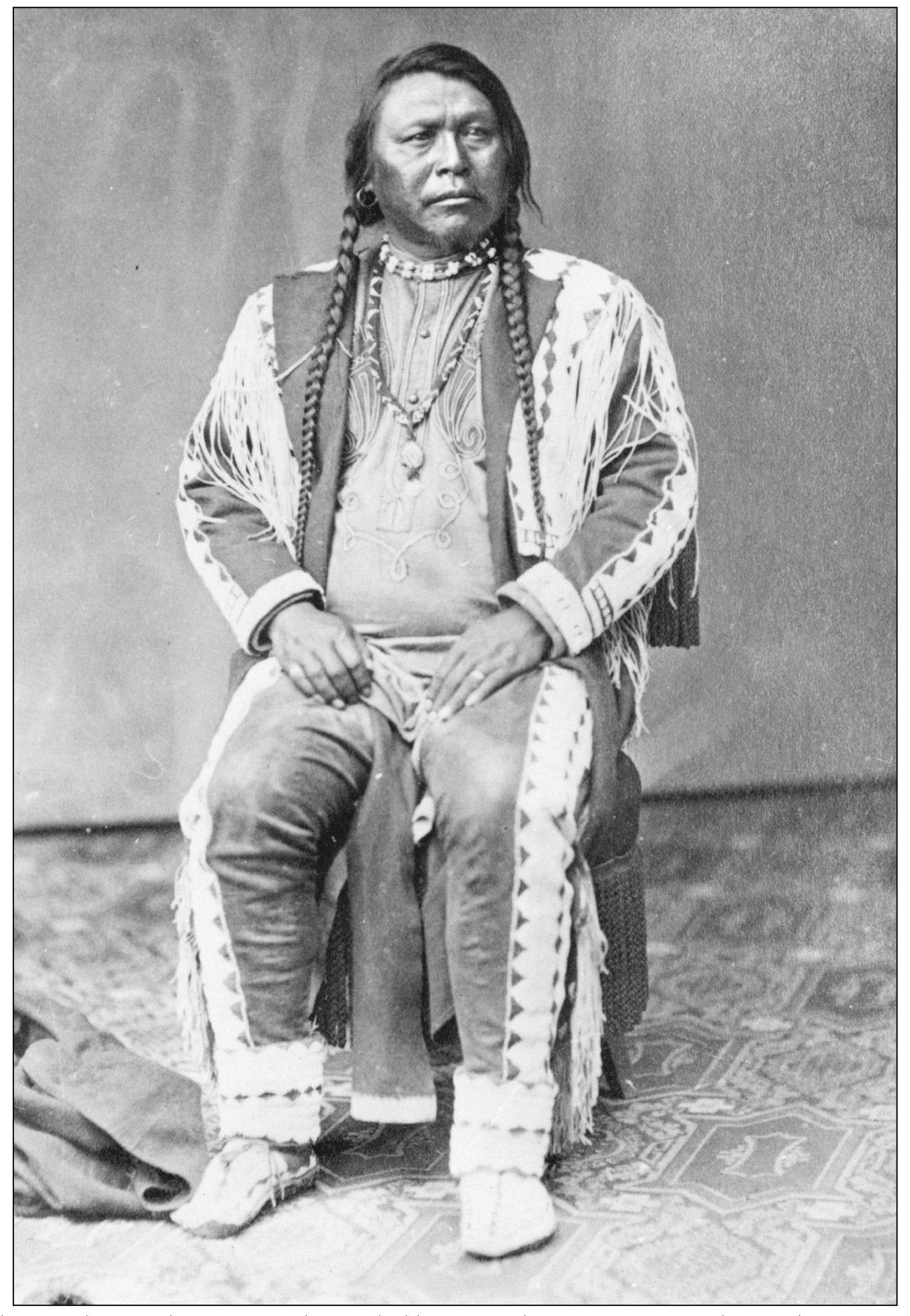ACKNOWLEDGMENTS
News is history in its first and best form, its vivid and fascinating form...
History is the pale and tranquil reflection of it.
Mark Twain (18351910) author and sometime journalist/historian.
The caretakers of Grand Junction are a dedicated collection of newspaper people, academics, archivists, and an exciting core of volunteers who believe their communitys history should be preserved with the same pure form as Mark Twains early journalistic enthusiasm. A list of those people in Grand Junction would be longer than this book.
Specifically, I want to thank Kenneth E. Johnson, Grand Junctions version of Damon Runyon. As former owner and managing editor of the Grand Junction Daily Sentinel and the current driving force behind the Grand Junction Free Press , he has taken the community spirit of R. C. Walker, Walter Walker, and Preston Walker and rekindled it in 21st-century Grand Junction.
The Museum of Western Colorado has become an important repository for the preservation of the history of the Western Slope of the Colorado Rocky Mountains. Many thanks go to Mike Perry (executive director), David Bailey (curator of history), Miffie Blozvich (development director), and especially to Michael Menard (archivist/librarian) and his vibrant core of volunteer resources who make the Loyd Files Research Library their second home.
Another excellent source of information is spearheaded by Aimee Brown, special collections and archives librarian for the Tomlinson Library at Mesa State College. I appreciate the opportunity to include their archives in the creation of this brief look at the pictorial history of Grand Junction.
Many thanks go to the friendship and hospitality of Bob Fisher and Patti Chamberlain Fisher, particularly during the research of this book.
Research material used in this book includes the writings of Richard E. Tope; the collective volumes of the Journal of the Western Slope , published by the Mesa State College Historical Society and Alpha Gamma Epsilon Chapter of Phi Alpha Theta; the Web sites of the Southern Ute Indian tribe and the Kansas GenWeb Archives by Tom and Carolyn Ward; and the Colorado Prospector . Many thanks go to the Enstrom family for their participation in this book.
Writing is never any fun unless you have some great people behind you. Many thanks go to Arcadia West publisher Devon Weston and acquisitions editor Jerry Roberts. As always, it is fun to work with you folks.
ABOUT THE GRAND JUNCTION ARCHIVES
The Museum of Western Colorado is the largest multidisciplinary museum between Salt Lake City and Denver. During the past 40 years, it has grown to include three major museum facilities, three active outdoor paleontology sites, an educational center, and a respected research library. It offers a multitude of programs, featuring dinosaur expeditions, extensive educational programming, and historic and cultural trips and tours, ranging from local to international. Annually more than 117,000 visitors participate in its programs and enjoy the facilities. This number includes approximately 17,000 western slope kindergarten through 12th grade students, who experience high-quality site tours, programs, and outreach activities.
The Loyd Files Research Library in the Museum of Western Colorado provides information about the regions cultural and natural history. The library archivist collects photographs, one-of-a-kind manuscripts, maps, city directories, high school annuals, and rare books. It offers onsite access to the Mesa County Genealogy Societys library of more than 3,000 books and materials collected by the Mesa County Historical Society and the Quahada Chapter of the Colorado Archaeological Society.
The museum and library are located at 462 Ute Avenue in Grand Junction. Its telephone number is 970-242-0971. The mailing address is PO Box 20000, Grand Junction, Colorado, 81502-5020.
The Special Collections and Archives Department of the Tomlinson Library at Mesa State College collects and provides access to rare books and material on the history and geology of western Colorado. The Mesa State College archives acts as the memory of the institution by collecting, preserving, and making accessible for research the historical records of the college. The collections include yearbooks, student publications, and photographs. Local history collections include the Walter Walker Family Papers and the William H. Nelson Water Collection. For more information, visit http://www.mesastate.edu/msclibrary/spcoll.html , or contact the Tomlinson Library at 970-248-1864 or 970-248-1860.
Find more books like this at
www.imagesofamerica.com
Search for your hometown history, your old
stomping grounds, and even your favorite sports team.
One
COWBOYS AND INDIANS
The following text was found in Prof. Richard E. Topes Objective History: Grand Junction, Colorado . Western Colorado was occupied by the Ute Indians, who were divided into bands that roamed over the vast mountainous territory:
At the time of settlement, authorities estimated there were no more than four thousands of these Indians, and the government was arranging to remove them to an established agency smaller in area. The Utes lived off the regions and had no vision of any further development than just to live. They were not tradesmen in any sense, nor were they interested in the least in agriculture. They had no fixed habitation, just roamed the forest areas, lived on fish and game, dressed to some extent in the furs of the animals they killed for food. They had one skill: that of making a good bow, thong and arrows, and chipping a very fine flint as an arrow tip. Many chipping spots are known. They knew how to prepare the skins of animals for clothing and for their shelters.
The Utes were never interested in the Grand Valley or the site of Grand Junction... They had no vision or constructive imagination. The great rivers that joined here meant nothing to them. Crossing places were few and far between, a hindrance to their migrations. They never dreamed of transportation or highways or railroads. They did not care for horses; any possibility of the use of the soil for producing food never entered their minds. Their stage of civilization had reached its full height and they were stabilized in their own kind of culture and economy.
When they moved about over the area that they claimed as their own, they skirted around the high elevations within the edge of the timber where there was coverage and shade, where there was fresh water from the springs and mountain streams, where the fishing was good, where good wild game could be caught and where they could rest to their hearts content. So the only thing the Indians ever did for Grand Junction was to look upon the site with a vacant meaningless stare.
According to the Southern Ute Indian tribal history, Chief Ouray, a member of the Uncompahgre (or Tabeguache) Ute band, became chief after his fathers death in 1860. He was known as a diplomat, negotiating peace among bands of Native Americans, as well as with the settlers in western Colorado. Among more militant Ute Indians, he was considered a coward and the white mans friend. Ouray never cut his long hair, which he wore in traditional Ute fashion, but he frequently dressed as a white man. When meeting Ouray in 1890, Pres. Rutherford B. Hayes described him as the most intellectual man Ive ever conversed with. He also met to discuss Native American affairs with Ulysses S. Grant. Oral Ute history places his birth in 1833, but other accounts describe his birth as early as 1820. His mother was a member of the Uncompahgre band, and his father, Guera Murah, was half Jicarilla Apache. (Courtesy of the authors collection.)


